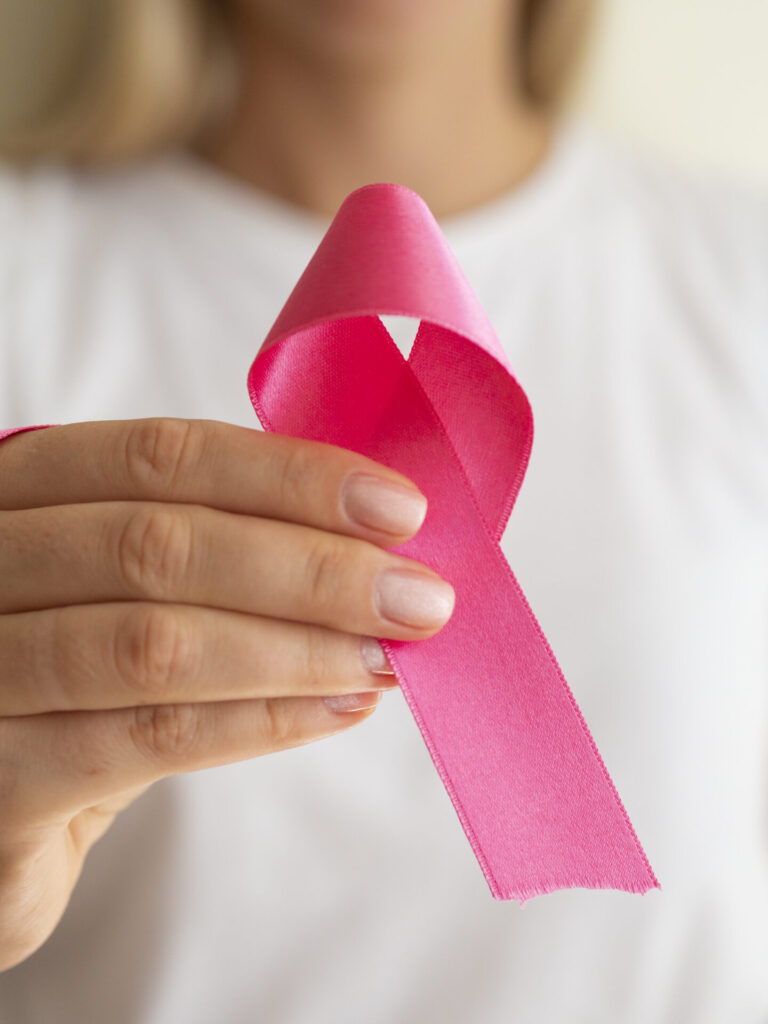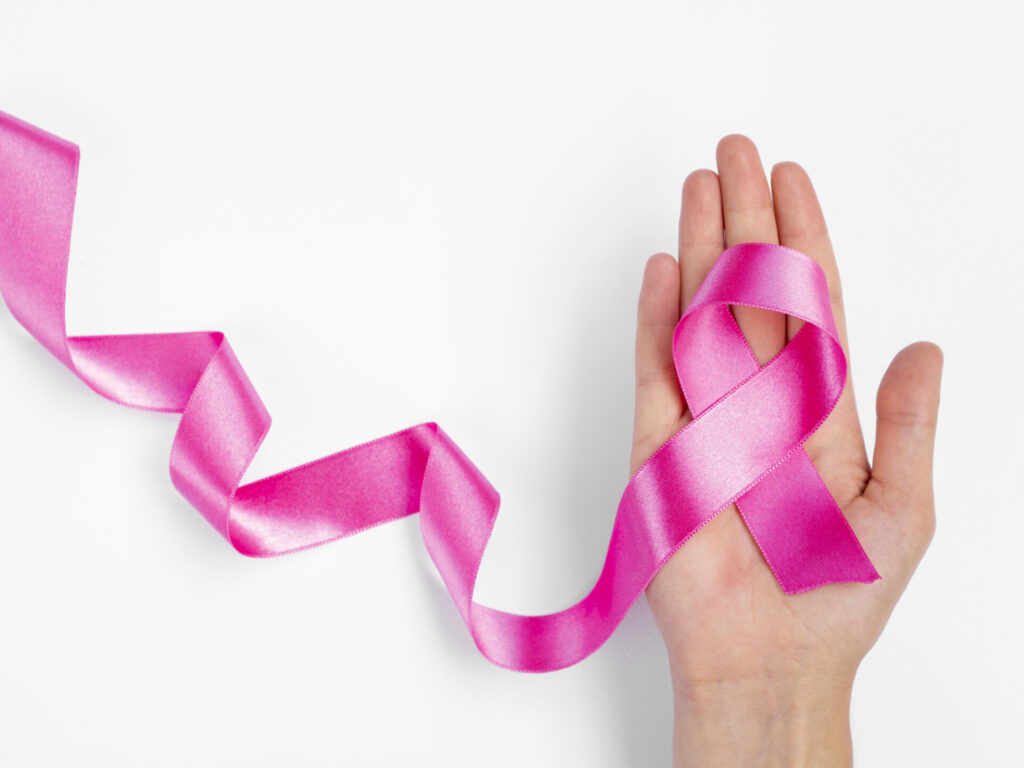Contents
- 1 Navigating Breast Cancer: Understanding, Detection, Treatment, and Hope
- 1.1 Introduction
- 1.2 Incidence and Prevalence
- 1.3 Understanding Breast Cancer: An Overview
- 1.4 read more posts
- 1.5 Signs and Symptoms
- 1.6 Types and Stages of Breast Cancer: A Varied Landscape
- 1.7 Staging:
- 1.8 read more posts
- 1.9 Diagnosis
- 1.10 Treatment
- 1.11 read more posts
- 1.12 Breast Cancer Awareness and Early Detection
- 1.13 read more posts
- 1.14 Survivorship and Support
- 1.15 Conclusion
- 1.16 read more posts
- 1.17 FAQs about Breast Cancer with Answers:
- 1.18 read more posts
Read DISCLAIMER
Examine the intricacies of breast cancer, including its prevalence, risk factors, signs, diagnosis, course of therapy, and continuing investigations. Learn about survivability, early identification, and the pursuit of better results in the fight against this common illness.
Introduction

Breast cancer is a complicated and intricate illness that affects millions of people globally. It happens when breast tissue cells grow out of control and develop into a cancerous tumor. In addition to being common, this condition has a wide range of symptoms, risk factors, and available treatments. In order to address its prevalence, effect, and the continuing study and therapy efforts, it is imperative to comprehend its many components.
Incidence and Prevalence
Breast cancer is the second most frequent cancer overall and the most prevalent among women worldwide. In 2020, the World Health Organization (WHO) projected that 2.3 million new cases will be diagnosed. It’s crucial to remember, too, that men can also get breast cancer, albeit less frequently—roughly 1% of all occurrences of the disease occur in men.
Understanding Breast Cancer: An Overview

Definition and Basics:
One kind of cancer that starts in the breast cells is called breast cancer. Although it can happen to males as well, women experience it significantly more frequently. If treatment is not received, the condition, which often starts in the milk ducts or lobules, can spread to the surrounding tissues.
Causes of Breast Cancer: Unraveling the Complexity
Genetic Factors:
The chance of getting breast cancer is markedly increased by certain gene mutations, including BRCA1 and BRCA2. These mutations can be found by genetic testing, which helps with preventative steps.
The Hormonal Effects:
Hormonal variables are important; extended exposure to estrogen has been associated with an increased risk. Elevated estrogen levels are caused by early menstruation or late menopause, hormone replacement treatment (HRT), and other factors.
Aspects of the Environment and Lifestyle:
Breast cancer risk may be increased by exposure to radiation, environmental contaminants, and certain lifestyle choices such heavy alcohol use and inactivity.
Risk Factors
There are several variables that might increase a person’s risk of breast cancer. Certain factors, such age, gender, and genetic predisposition, cannot be changed, while other factors are influenced by environmental factors and lifestyle choices.
Non-Modifiable Risk Factors
– Age: Risk increases with age; the majority of breast cancer cases occur in women over 50.
– Gender: Women are at a higher risk compared to men.
– Genetics: Inherited genetic mutations (BRCA1 and BRCA2 genes) significantly increase the likelihood of developing breast cancer.
Modifiable Risk Factors
– Obesity: Being overweight or obese, particularly after menopause, increases the risk.
– Physical Activity: Lack of regular physical exercise is associated with higher risk.
– Alcohol Consumption: Consuming alcohol, even in moderate amounts, is linked to an increased risk.
– Hormone Replacement Therapy (HRT): Long-term use of certain hormone therapies may elevate the risk.
read more posts
Signs and Symptoms

Detecting breast cancer early can significantly improve treatment outcomes. Symptoms can vary but commonly include:
– Lump or Thickening: A new lump or an area of thickened tissue in the breast or underarm.
– Changes in Breast Size or Shape: Swelling, shrinkage, or asymmetry in one breast.
– Skin Changes: Redness, dimpling, or puckering of the breast skin.
– Nipple Changes: Nipple inversion, discharge, or scaling.
Types and Stages of Breast Cancer: A Varied Landscape
Invasive Ductal Carcinoma (IDC):
The most common type, IDC begins in the milk ducts and invades nearby tissues.
Invasive Lobular Carcinoma (ILC):
Originating in the lobules, ILC tends to spread more diffusely within the breast.
Triple-Negative Breast Cancer:
Lacking receptors for estrogen, progesterone, and HER2/neu, this aggressive subtype requires targeted treatment approaches.
Staging:
Breast cancer is staged based on the size of the tumor, lymph node involvement, and metastasis. Stages range from 0 (in situ) to IV (advanced).
read more posts
Diagnosis
Various diagnostic tools are used to confirm the presence of breast cancer:
– Mammograms: X-ray images of the breast used for screening and detection.
– Biopsy: Removal of tissue for examination under a microscope to determine if cancer cells are present.
– MRI and Ultrasound: Imaging techniques that may be used alongside mammograms for a more comprehensive assessment.
Treatment
The treatment plan for breast cancer depends on several factors, including the stage of cancer, type of breast cancer, and overall health of the patient. Treatments may include:
– Surgery: Lumpectomy or mastectomy to remove the tumor or the entire breast.
– Radiation Therapy: Using high-energy rays to destroy cancer cells.
– Chemotherapy: Medications to kill cancer cells or stop their growth.
– Hormone Therapy: Blocking hormones that fuel certain types of breast cancer.
– Targeted Therapy: Drugs targeting specific molecules involved in cancer growth.
read more posts
Breast Cancer Awareness and Early Detection
Breast Self-Examination:
Frequent breast self-examinations help people get to know their breasts, which makes it easier to spot changes or abnormalities early on. Self-examinations, however, cannot take the place of professional screening.
Clinical Breast Examination:
Healthcare practitioners do clinical breast examinations, which entail a comprehensive physical examination of the breasts to look for lumps or other abnormalities.
Mammography:
Mammograms, which are breast tissue X-ray scans, are essential for finding cancers that might not be felt during a physical examination. The primary method of detecting breast cancer is routine mammography screenings.
Biopsy and Genetic Testing:
If anomalies are discovered, a biopsy is carried out to ascertain whether the tissue is malignant. In cases when there are other risk factors or a family history, genetic testing may be advised.
read more posts
Survivorship and Support
In addition to medical care, emotional and psychological support are also necessary for breast cancer survivors. Following therapy, many people go through a range of feelings, including as despair, worry, and fear of recurrence. Important elements of treatment include access to survivorship programs, counseling, and support groups.
Conclusion
Breast cancer is a complex issue that affects millions of people globally. Due to its widespread occurrence, variety of symptoms, and intricate etiology, a comprehensive strategy is required. Combating its impact requires an understanding of risk factors, prompt identification, and changing therapies. The disease’s intricacy, which stems from both hereditary predispositions and lifestyle effects, emphasizes the value of education and awareness campaigns. It is critical to achieve early detection through screenings, self-examinations, and improvements in diagnostic tools. With the ongoing evolution of treatment modalities, including as radiation, surgery, and targeted medicines, there is hope for better results. For comprehensive care, survivorship and post-treatment support are essential. Ongoing research promises a brighter future for people impacted by the condition by serving as a beacon for breakthroughs in knowledge, prevention, and treatment.
read more posts
FAQs about Breast Cancer with Answers:
1. What Causes Breast Cancer?
Breast cancer’s origins are complex, often arising from a combination of genetic, environmental, and lifestyle factors. Mutations in specific genes, such as BRCA1 and BRCA2, can increase susceptibility. Hormonal influences, exposure to radiation, and family history also contribute.
2. When is Breast Cancer Awareness Month?
Breast Cancer Awareness Month, recognized globally in October, aims to raise awareness, encourage early detection, and support those affected by breast cancer. Events and initiatives during this month promote education and fundraising for research.
3. What is Breast Cancer?
Breast cancer is a type of cancer that originates in the cells of the breast. It can manifest in various forms, including invasive ductal carcinoma, invasive lobular carcinoma, and triple-negative breast cancer, each with distinct characteristics and treatment approaches.
4. What Does Breast Cancer Look Like?
Breast cancer may present as a lump or mass, but visual signs can include changes in skin texture, redness, or dimpling. Regular self-exams and mammograms aid in early detection, enhancing treatment success rates.
5. What Does Breast Cancer Feel Like?
Breast cancer can manifest as a painless lump, but it may also cause breast pain or discomfort. Regular breast self-exams are crucial for detecting abnormalities early on.
6. What is Triple Negative Breast Cancer?
Triple-negative breast cancer lacks receptors for estrogen, progesterone, and HER2/neu. This subtype tends to be more aggressive, necessitating tailored treatment strategies such as chemotherapy.
7. What Are Signs of Breast Cancer?
Signs include changes in breast size or shape, nipple changes, skin changes, and persistent pain. Recognizing these signs prompts timely medical attention.
8. What Color is Breast Cancer Discharge?
Breast cancer discharge can vary, but it is typically bloody or clear. Any unusual discharge warrants consultation with a healthcare professional.
9. How to Prevent Breast Cancer?
While prevention is challenging, adopting a healthy lifestyle can reduce risk. This includes maintaining a balanced diet, exercising regularly, limiting alcohol intake, and avoiding tobacco.
10. What is Metastatic Breast Cancer?
Metastatic breast cancer occurs when cancer spreads beyond the breast to other organs. Management focuses on controlling the disease and maintaining quality of life.
11. How to Check for Breast Cancer?
Regular breast self-exams, clinical breast exams, and mammograms are essential for early detection. Awareness of one’s body and prompt reporting of changes to healthcare providers are crucial.
12. What Are the Signs of Breast Cancer?
Signs encompass various changes in breast appearance and sensation. Early detection through awareness of these signs is key to successful treatment.
13. How is Breast Cancer Diagnosed?
Diagnosis involves imaging tests, biopsy, and a thorough medical history review. Early and accurate diagnosis enables timely treatment planning.
14. What Month is Breast Cancer Awareness?
Breast Cancer Awareness Month is observed globally in October, marked by campaigns, events, and initiatives focused on education, fundraising, and support.
15. How Common is Breast Cancer?
Breast cancer is prevalent, affecting millions worldwide. Awareness, early detection, and advancements in treatment contribute to improved outcomes.
16. How Do You Know If You Have Breast Cancer?
Changes in breast appearance, pain, or unusual symptoms prompt suspicion. Consulting with a healthcare professional for diagnostic tests provides clarity.
17. What Do Breast Cancer Lumps Feel Like?
Breast cancer lumps may feel firm, irregular, and painless. However, not all lumps indicate cancer, underscoring the importance of professional evaluation.
18. How Do You Get Breast Cancer?
The development of breast cancer involves a combination of genetic, environmental, and lifestyle factors. Understanding risk factors informs preventive measures.
19. Why is Left Breast Cancer More Common?
The reasons for left-sided breast cancer prevalence are not fully understood. Ongoing research explores potential contributing factors.
20. What Percentage of Breast Biopsies are Cancer?
While many breast biopsies reveal non-cancerous findings, the percentage diagnosed with cancer varies. Timely and accurate biopsy results guide treatment decisions.
21. What Are the Symptoms of Breast Cancer?
Symptoms encompass changes in breast appearance, pain, nipple changes, and skin abnormalities. Recognizing symptoms prompts timely medical attention.
22. What Does Breast Cancer Look Like on a Mammogram?
Breast cancer on a mammogram appears as irregular masses or calcifications. Mammography is a vital tool for early detection.
23. What Percentage of Breast Biopsies Are Cancer?
The percentage of cancerous breast biopsies varies, emphasizing the need for thorough evaluation and accurate diagnosis.
24. What Stage of Breast Cancer Requires a Mastectomy?
Mastectomy may be recommended in various stages, depending on factors like tumor size, location, and the presence of metastasis. Individualized treatment plans guide decisions.
25. What Does a Breast Cancer Rash Look Like?
Breast cancer-associated rashes may appear red, inflamed, or scaly. Prompt medical attention is essential for proper diagnosis and treatment.
26. How to Avoid Breast Cancer?
While prevention is not guaranteed, adopting a healthy lifestyle, undergoing regular screenings, and understanding risk factors contribute to reducing the risk of breast cancer.
27. What Does Breast Cancer Look Like on Ultrasound?
On ultrasound, breast cancer appears as a solid mass with irregular borders. Ultrasound aids in further assessment after mammography.
28 : Can men get breast cancer?
Yes, though rare, men can develop breast cancer due to the presence of breast tissue. Approximately 1% of all breast cancer cases occur in men.
29: What are the key symptoms of breast cancer?
Symptoms include a lump or thickening in the breast or underarm, changes in breast size or shape, skin alterations, and nipple changes.
30: How can breast cancer be detected early?
Early detection methods include regular breast self-exams, clinical breast exams by healthcare professionals, and routine mammography screenings.
31: What treatment options are available for breast cancer?
Treatment depends on factors like cancer stage and type and may involve surgery, radiation, chemotherapy, hormone therapy, or targeted therapy.

This is my first time pay a quick visit at here and i am in fact pleassant to read all at single place.
Your article helped me a lot, is there any more related content? Thanks!
Thank you for your sharing. I am worried that I lack creative ideas. It is your article that makes me full of hope. Thank you. But, I have a question, can you help me?
Can you be more specific about the content of your article? After reading it, I still have some doubts. Hope you can help me.